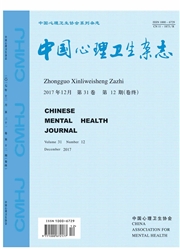

 中文摘要:
中文摘要:
目的:探讨汉语阅读障碍儿童与正常者汉字字形、字音和字义启动效应的差异。方法:选取阅读障碍儿童(25人)及与之年龄和阅读水平相配比的两组对照儿童(各25人)。应用启动范式让被试进行真假字判断。真字启动条件分别设为形近、音同、义近和无关4类,无关字对作为基线,假字字对作为干扰刺激。考察被试在各启动条件下的反应时、启动量及应答错误率的差异。结果:阅读障碍组儿童汉字形、音、义校正启动量(-0.010、-0.010、0.001)明显低于对照组儿童(年龄对照组分别为0.026、0.026、0.022;阅读水平对照组分别为0.062、0.058、0.031)(F=17.91,P〈0.001)。正常儿童汉字启动效应可能的大小排序为:字形〉字音〉字义。阅读能力和启动效应间交互作用不显著。结论:阅读障碍儿童存在着一种普遍的字形和读音加工缺陷,支持联结模型关于阅读障碍的假设。
 英文摘要:
英文摘要:
Objective: To explore differences of graphic, phonological and semantic priming in Chinese character recognition between dyslexic children and normal children. Method: A priming paradigm was used to facilitate subjects to complete a lexical decision task. The differences of reaction time, priming effect and error rate between dyslexic children and normal children were analyzed. Results : The baseline adjusted facilitations of graphic, phonological and semantic priming in character recognition in dyslexic children were -0. 010, -0. 010, and 0. 001 respectively. The dyslexic children even showed inhibition in graphic and phonological prime conditions. For the age control group the facilitations under the three prime conditions were 0. 026, 0. 026 and 0. 022. As for the reading level control group, results were 0. 062, 0. 058 and 0. 031 respectively. The differences of priming effects between dyslexic children and normal children were significant, especially in graphic and phonological priming conditions. The possible order of the three priming effects ( from high to low ) was : graphic, phonological and semantic. The interactions between reading ability and priming were not significant. Conclusion: Results from the present study suggest that there is a general deficit in graphic and phonological processing in character recognition in Chinese dyslexic children. This phenomenon can be interpreted by the connectionist model.
 同期刊论文项目
同期刊论文项目
 同项目期刊论文
同项目期刊论文
 期刊信息
期刊信息
